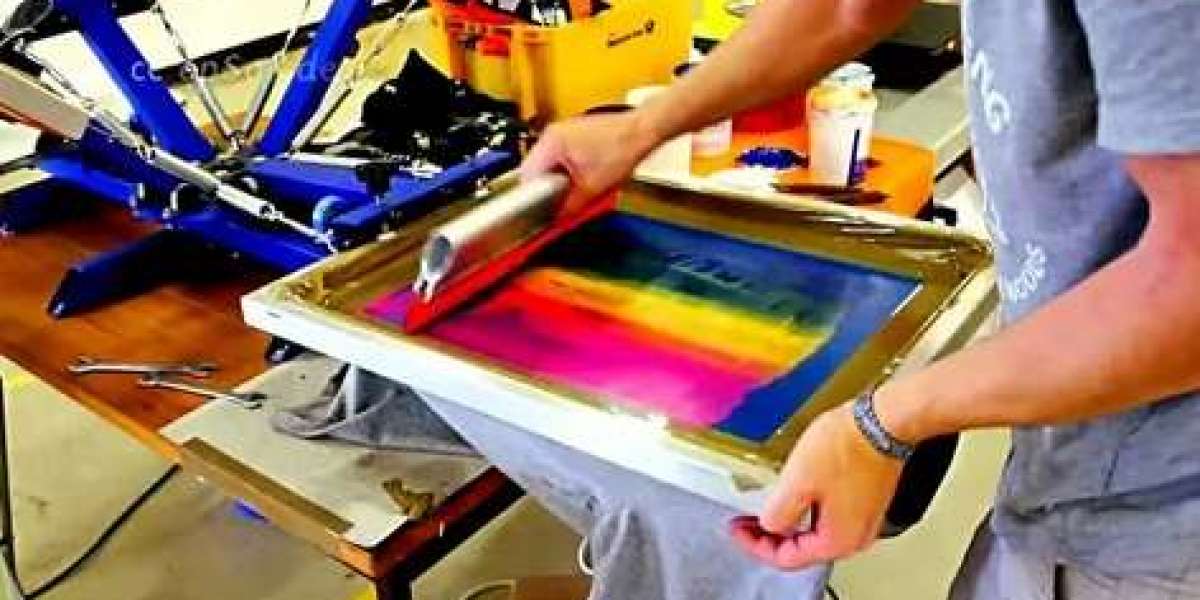Screen printing has been a staple in the world of apparel customization and manufacturing for decades. Its ability to produce high-quality, durable prints makes it a popular choice for creating unique clothing designs, from custom t-shirts to branded uniforms. In this article, we will explore the screen printing process, its benefits, applications, and tips for achieving the best results.
What is Screen Printing?
Screen printing, also known as silk screening, is a versatile printing technique where ink is pushed through a mesh screen onto a substrate, typically fabric. The process involves creating a stencil (or screen) for each color in the design, which allows the ink to transfer precisely onto the clothing. This method is renowned for its durability and vibrant color reproduction, making it ideal for various applications.
The Screen Printing Process
1. Design Preparation
The first step in screen printing clothing is preparing the design. This involves creating a digital or physical artwork that will be transferred onto the screen. For multi-color designs, each color requires a separate screen, which adds to the complexity but allows for intricate and vibrant results. The design is then separated into its individual colors and each one is processed onto a separate screen.
2. Screen Creation
The screens used in screen printing are typically made of a fine mesh stretched over a frame. Each screen is coated with a light-sensitive emulsion and exposed to a light source with the design projected onto it. The areas of the screen that are exposed to light harden, while the unexposed areas remain soft and are washed away, creating a stencil for the ink.
3. Ink Application
Once the screens are prepared, the fabric is positioned on a flat surface or printing press. Ink is then applied to the screen and pushed through the mesh using a squeegee. This process transfers the ink onto the fabric in the shape of the stencil. For multi-color designs, each color is printed separately using its own screen, with drying or curing between each layer to prevent smudging.
4. Curing
After the ink is applied, the printed clothing is passed through a curing unit, which uses heat to set the ink and ensure it adheres properly to the fabric. Curing is crucial for the durability of the print, as it helps the ink withstand washing and wear.
Benefits of Screen Printing
Screen printing offers several advantages over other printing methods:
1. Durability
Screen printing is known for producing prints that are long-lasting and resistant to fading. The ink used in screen printing bonds well with the fabric, ensuring that the design remains vibrant even after numerous washes.
2. Color Vibrancy
The process allows for the use of a wide range of ink colors, including spot colors and specialty inks. This results in bright, eye-catching designs that stand out. Unlike digital printing, which can sometimes produce muted colors, screen printing provides rich and vibrant hues.
3. Cost-Effectiveness for Bulk Orders
While the setup costs for screen printing can be higher, it becomes more cost-effective for large quantities. The more items you print, the lower the cost per unit, making it an excellent choice for bulk orders such as team uniforms or promotional merchandise.
4. Versatility
Screen printing can be applied to various types of fabrics and materials, including cotton, polyester, and blends. It’s also adaptable to different garment types, from t-shirts and hoodies to tote bags and aprons.
Applications of Screen Printing
Screen printing is used in a variety of settings:
1. Custom Apparel
One of the most common applications is custom t-shirt printing for events, businesses, or personal use. Whether it’s for a family reunion, sports team, or promotional event, screen printing allows for customization with high-quality, durable designs.
2. Branding and Merchandise
Businesses often use screen printing to create branded merchandise, including uniforms, hats, and promotional items. The ability to produce consistent and vibrant branding makes it a popular choice for companies looking to promote their identity.
3. Art and Fashion
Artists and designers use screen printing to create limited edition prints and unique clothing lines. The technique allows for the reproduction of intricate designs and artwork on fabric, giving a distinctive and high-quality finish.
Tips for Successful Screen Printing
1. Choose the Right Fabric
The type of fabric you choose can impact the final result. Natural fibers like cotton work well with screen printing, while synthetic fabrics may require special inks or pre-treatment to ensure proper adhesion.
2. Prepare Your Design
Ensure your design is high-resolution and properly separated by color. This will help achieve sharp and accurate prints. Work with a professional designer or printer to ensure the artwork is suitable for screen printing.
3. Test Print
Before committing to a full run, consider doing a test print. This allows you to check the quality of the print and make any necessary adjustments before producing the entire batch.
4. Proper Curing
Make sure the ink is fully cured to avoid issues with fading or peeling. Proper curing is essential for ensuring the longevity of the print and its resistance to washing.
Conclusion
Screen printing remains a popular and effective method for customizing clothing due to its durability, color vibrancy, and versatility. By understanding the process and following best practices, you can achieve high-quality prints that stand out and last. Whether you’re designing for a personal project, business, or creative endeavor, screen printing offers a reliable solution for bringing your designs to life on fabric.








